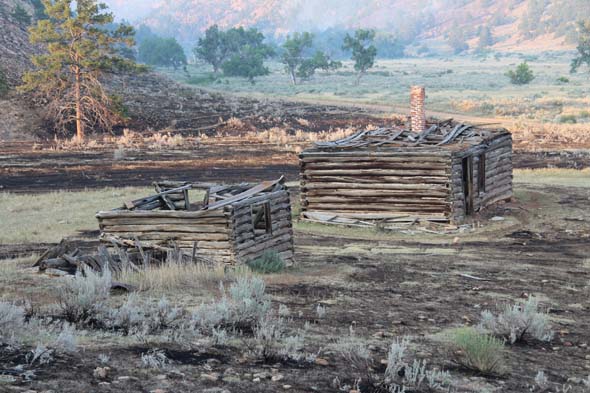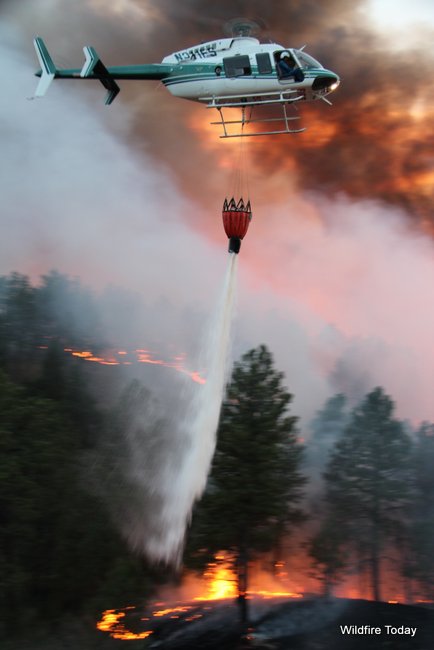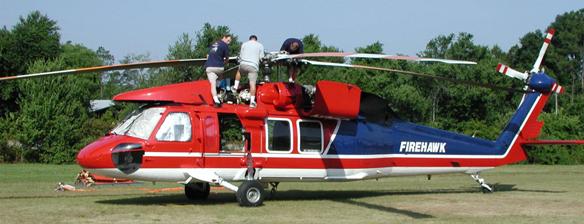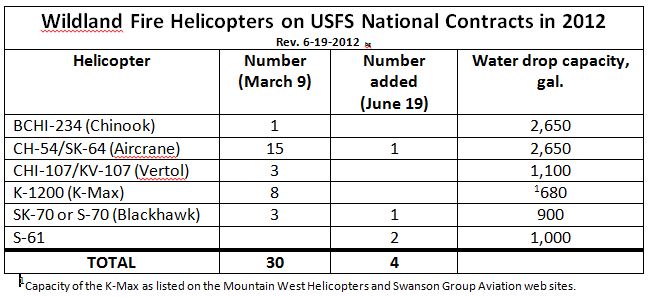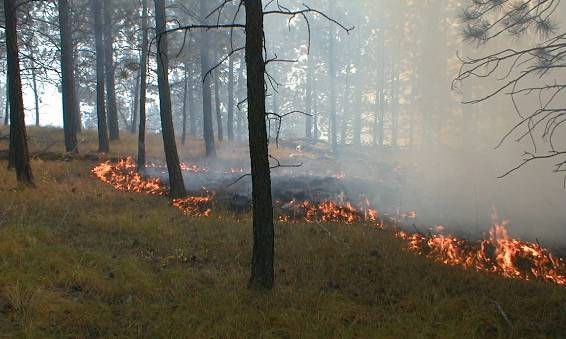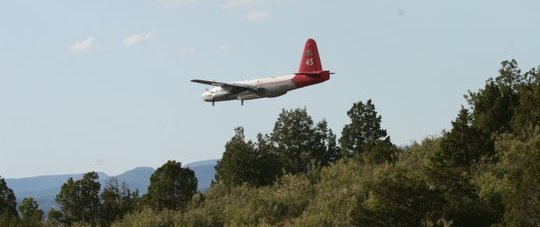In the photo above — these two very old structures near Red Canyon Road were carefully protected by firefighters who constructed a fireline around them and then removed additional fuel by burning out from the fireline. Photo by Bill Gabbert, June 30, 2012
The White Draw fire northeast of Edgemont was very active Saturday and firefighters received the support of two military MAFFS C-130 air tankers, until a thundershower in mid-afternoon dropped a little rain on the fire, slowing things down considerably. At 7 p.m. Saturday I drove all the way up Red Canyon road which divides the fire in half. I could only see a fraction of the 3,000-acre fire from the road but there was very little smoke visible. There was MUCH less action than I photographed on Friday, the day the fire started. However helicopters were busy dropping water on the east side yesterday evening.
Sunday morning the fire crews were scheduled to get an early start, with their morning briefing being held at 6 a.m. at the Edgemont Fairgrounds.
The Type 2 Incident Management Team that had been running the Dakota fire near Sheridan Lake is transitioning over to the White Draw fire. Rick Seidlitz will be the Incident Commander on this fire while Bob Fry is turning the Dakota fire over to a local Type 3 IMTeam.
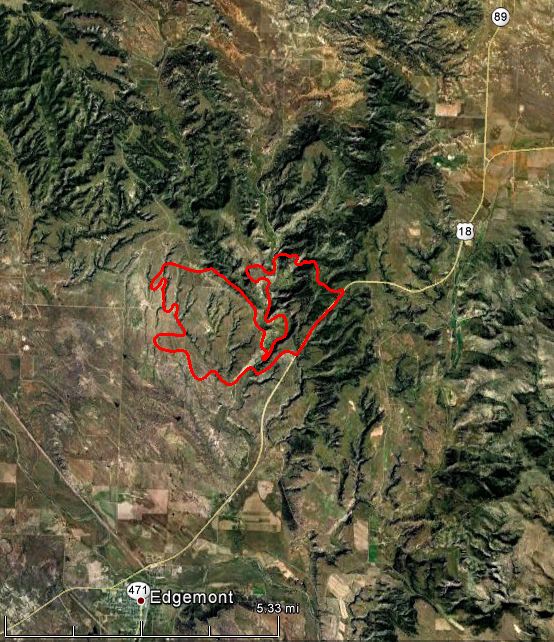
InciWeb now has current information about the fire.
Below is a news release from the IMTeam issued this morning at 9 a.m.
=============================================================
Edgemont, SD–Active fire behavior began in the late morning yesterday on the White Draw Fire producing heavy smoke and significant fire growth until a late afternoon shower briefly slowed fire activity, especially in the fine (grassy) fuels. Four helicopters provided water drops throughout the day to temporarily cool hot spots so firefighters could more safely and effectively attack the fire.
It wasn’t but a few minutes after the thundershower passed that once again the helicopters were being asked for aerial support. Aerial support was also provided by a Single Engine Air Tanker (SEAT) and two heavy air tankers.
As of late last night, the White Draw Fire is 10% contained and has burned roughly 3,000 acres. 181 personnel are assigned to this fire. This includes four type 2 hand crews (20 people each), crews associated with 13 engines, three dozers, and five water tenders. More crews and equipment have been ordered.
After a much dryer and warmer than normal spring, firefighters are dealing with flashy fuels that ignite rapidly. Hazardous steep terrain and rattlesnakes are added additional “watch out” conditions for them to deal with.
The night operation consisted mainly of patrolling and holding the fire line that was constructed during the day.
Weather today is once again expected to be hot and dry. There is a slight chance of light rain that may once again only temporarily slow fire activity.
Fire operations are starting an hour earlier this morning to take advantage of more favorable and efficient working conditions ahead of expected unfavorable winds and temperatures this afternoon. Crews will continue to hold and improve fire lines established yesterday in attempts to minimize fire growth. We are in a full suppression mode. Crews are also concentrating on structure protection to the northwest of the fire perimeter in anticipation of expected winds that could press the fire in that direction.
The White Draw Fire is located approximately five miles northeast of Edgemont, burning primarily on forest service lands in a mix of grasslands and timber.


